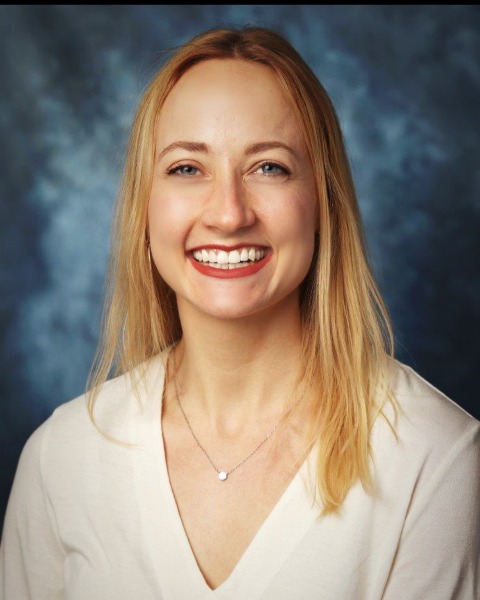Quality Improvement/Patient Safety 5
Session: Quality Improvement/Patient Safety 5
477 - Keeping This Between Us: Improving Confidential Adolescent Care in the Pediatric Emergency Department With Appropriate Sensitive Note Protection
Saturday, April 26, 2025
2:30pm - 4:45pm HST
Publication Number: 477.5591
Elizabeth F. Ebbens, Monroe Carell Jr. Children's Hospital at Vanderbilt, Madison, TN, United States; Barron Frazier, Monroe Carell Jr. Children's Hospital at Vanderbilt, Nashville, TN, United States; Stephen Gradwohl, Vanderbilt University, Nashville, TN, United States; Mary Romano, Vanderbilt University Medical Center, Nashville, TN, United States

Elizabeth F. Ebbens, MD (she/her/hers)
Pediatric Emergency Medicine Fellow
Monroe Carell Jr. Children's Hospital at Vanderbilt
Madison, Tennessee, United States
Presenting Author(s)
Background: Adolescents' health data for sexual/reproductive health, substance abuse, and mental health is confidential by law with some state-to-state variation. In emergency department (ED) encounters at our institution, providers often did not protect notes with this data from caregiver view in the electronic record, missing chances to keep confidentiality. When providers did protect notes, they at times blocked the whole ED note, at odds with the CURES Act mandate to restrict only confidential data and otherwise allow caregivers full access. Patients with positive suicide screens are particularly vulnerable given the sensitive nature of their ED visit.
Objective: Increase the percentage of protected notes from 5% to 10% for adolescents ages 12-17 presenting to the ED with positive suicide screens by October 2024
Design/Methods: We reviewed baseline data for adolescents with positive suicide screens from January 2022 to January 2023. Interventions included monthly resident education, a separate confidential note, and confidential note access within the primary ED note. Our primary measure was the percentage of protected notes. P-charts were used for analysis with Nelson rules to detect special-cause variation. Our secondary measure was the percentage of confidential note use, assessing compliance with legal documentation through confidential data segmentation. We included a process measure of total confidential note use in all adolescent encounters per week to identify overall note adoption.
Results: The study population included 6141 patient encounters, 2117 during the baseline period. The rate of confidential documentation increased from 5% to 9% associated with monthly education and segmenting confidential data in separate notes (Figure 1). There was special-cause variation after embedding confidential note access in the primary note. The separate confidential note became the primary means by which ED providers (80%) protected confidential information (Figure 2). There was a temporal relationship between missed education and low use. Confidential notes per week for all adolescent encounters increased after embedding note access (Figure 3).
Conclusion(s): We increased confidential documentation in our study population, though not to our goal. We improved legal compliance through data segmentation. Despite missed education, workflow documentation improvement through easy confidential note access supported note use in all patients, not just the target population. As better workflow integration had a durable effect, future work will continue to improve workflow integration to increase confidential documentation rates.
Figure 1
.png) Primary measure was percentage of protected notes for adolescents with a positive suicide screen (Columbia--Suicide Severity Rating Scale). Protected notes included both whole protected notes and separate protected confidential notes. Interventions are annotated. Red dots demarcate notable special cause variation associated with embedding confidential note access in the primary ED note.
Primary measure was percentage of protected notes for adolescents with a positive suicide screen (Columbia--Suicide Severity Rating Scale). Protected notes included both whole protected notes and separate protected confidential notes. Interventions are annotated. Red dots demarcate notable special cause variation associated with embedding confidential note access in the primary ED note. Figure 2
 Secondary measure was total separate confidential notes per protected notes after introduction of the separate note template in September 2023. Chart annotations highlight missed resident education sessions.
Secondary measure was total separate confidential notes per protected notes after introduction of the separate note template in September 2023. Chart annotations highlight missed resident education sessions. Figure 3
.png) Process measure was total number of separate confidential notes used per week across all adolescent patient visits. Chart annotations highlight interventions as well as missed resident education sessions.
Process measure was total number of separate confidential notes used per week across all adolescent patient visits. Chart annotations highlight interventions as well as missed resident education sessions. Figure 1
.png) Primary measure was percentage of protected notes for adolescents with a positive suicide screen (Columbia--Suicide Severity Rating Scale). Protected notes included both whole protected notes and separate protected confidential notes. Interventions are annotated. Red dots demarcate notable special cause variation associated with embedding confidential note access in the primary ED note.
Primary measure was percentage of protected notes for adolescents with a positive suicide screen (Columbia--Suicide Severity Rating Scale). Protected notes included both whole protected notes and separate protected confidential notes. Interventions are annotated. Red dots demarcate notable special cause variation associated with embedding confidential note access in the primary ED note. Figure 2
 Secondary measure was total separate confidential notes per protected notes after introduction of the separate note template in September 2023. Chart annotations highlight missed resident education sessions.
Secondary measure was total separate confidential notes per protected notes after introduction of the separate note template in September 2023. Chart annotations highlight missed resident education sessions. Figure 3
.png) Process measure was total number of separate confidential notes used per week across all adolescent patient visits. Chart annotations highlight interventions as well as missed resident education sessions.
Process measure was total number of separate confidential notes used per week across all adolescent patient visits. Chart annotations highlight interventions as well as missed resident education sessions. 
